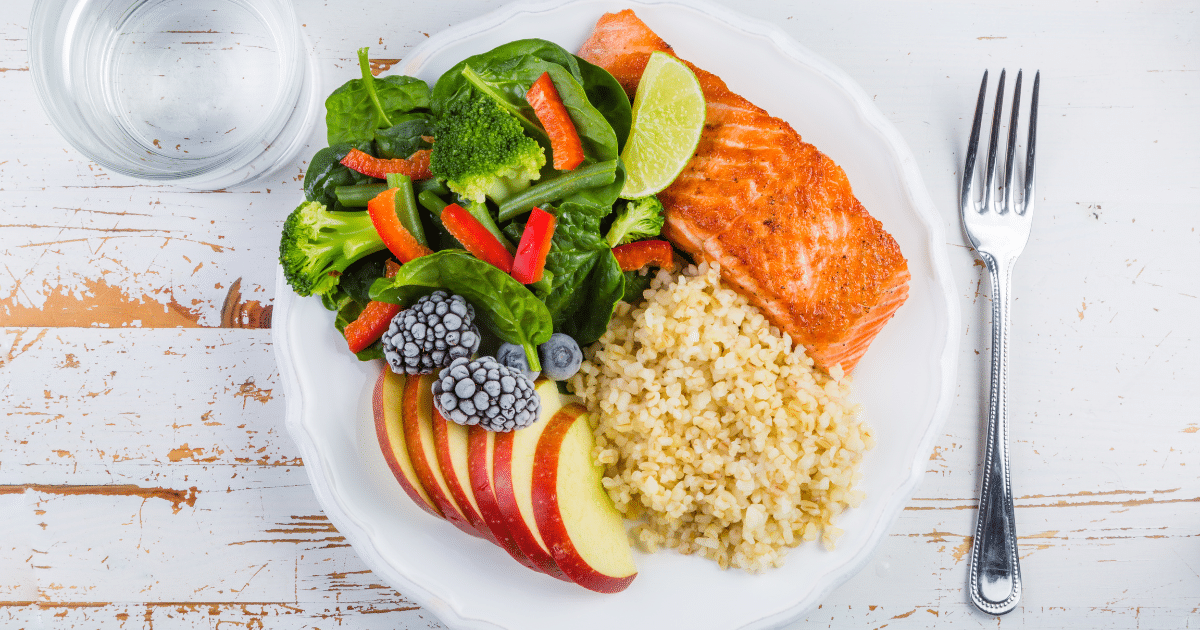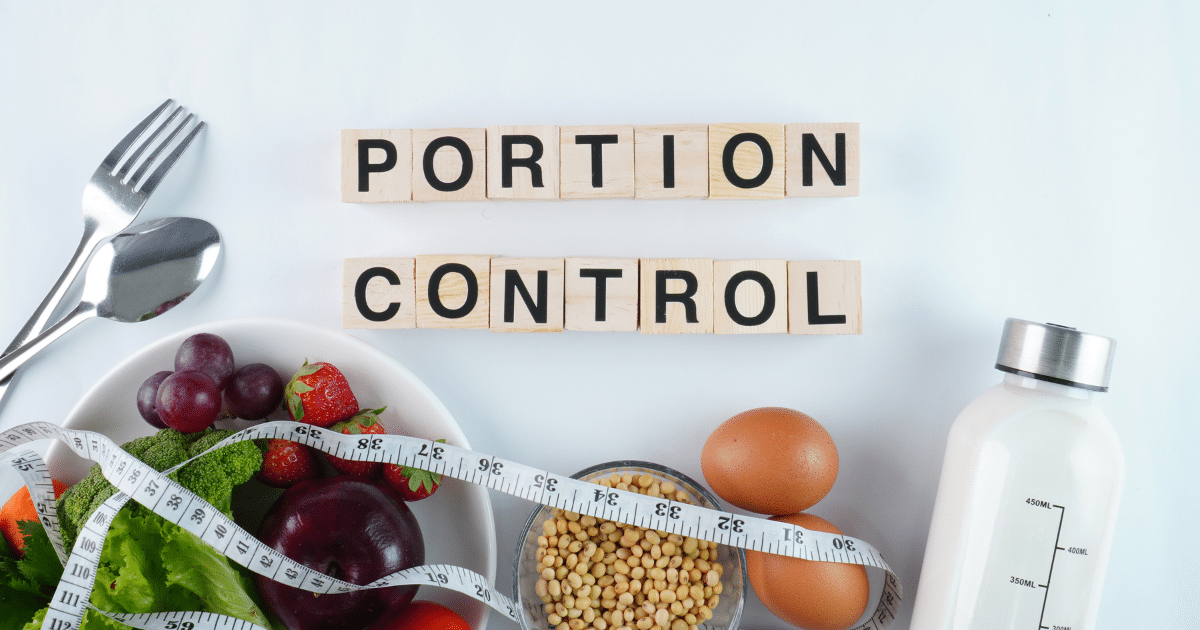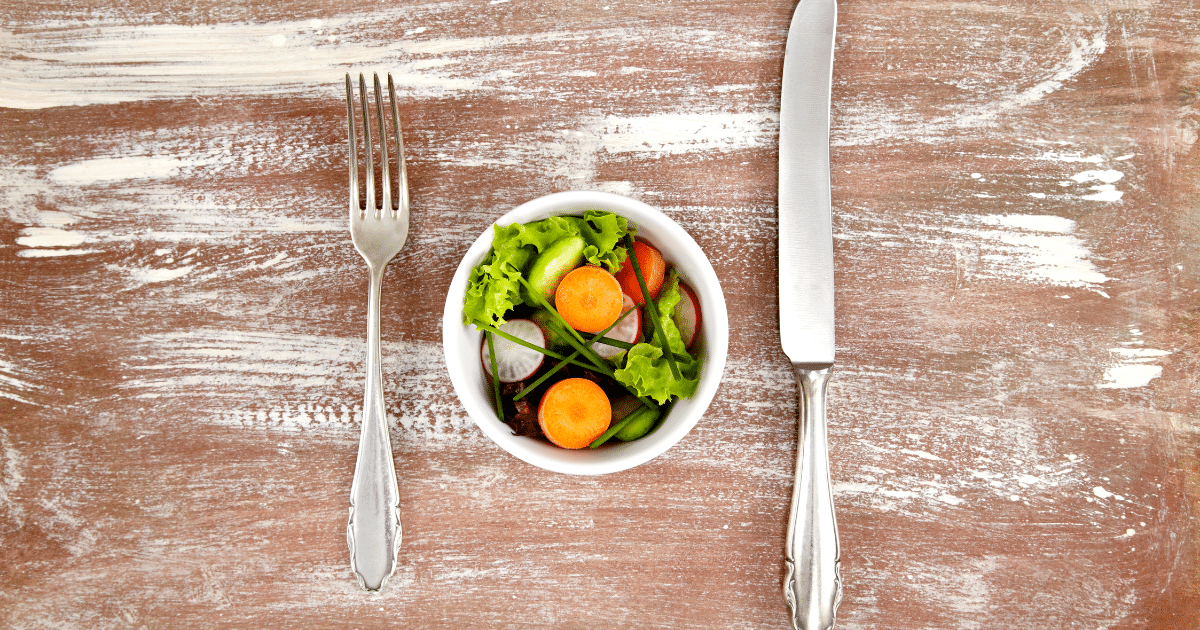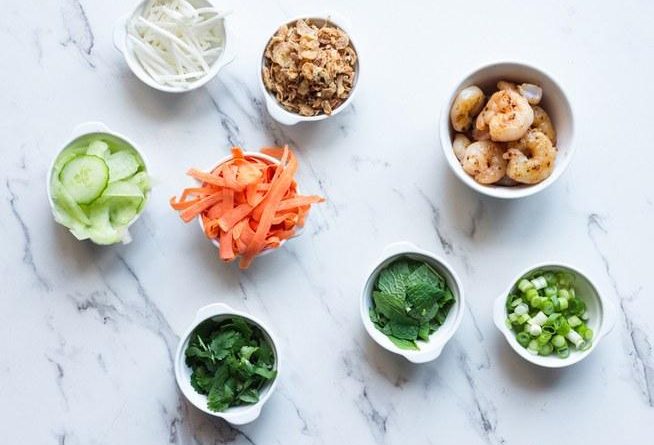5 Tricks To Manage Mealtime Portion Control
Portion control is one of those things that either you understand it or you don’t. You either know what it encompasses or you end up gorging and have your plate overflowing with food. Portion control is something that will either help you with your weight loss goals or it can cause you to gain a significant amount of weight (body fat) fairly quickly.
With all of the content on the internet these days, I didn’t want to give you the same old “here’s what your plate should look like” piece of content that you’ve probably read a thousand times already. Instead, I want to provide you with some tricks to help you manage your mealtime portion control. Here are five tricks to managing mealtime portion control that you can start implementing into your life.

Disclaimer: This article is for informational purposes only and is not meant to treat or diagnose any condition. It is recommended that you speak with your doctor before starting any exercise program, changing your daily nutrition, or adding any supplements to your regimen.
What Does Portion Control Mean?
Portion control refers to the practice of managing the amount of food you eat in a single serving. It involves being mindful of the quantity of food you consume to maintain a balanced and healthy diet. The goal of portion control is to avoid overeating and to ensure that you are consuming appropriate amounts of nutrients without consuming excess calories.
Controlling portions can be important for various reasons, including weight management, maintaining nutritional balance, and preventing overconsumption of calories, fats, sugars, and other potentially unhealthy components. It doesn’t necessarily mean restricting yourself from enjoying your favorite foods but rather being aware of the serving sizes and making choices that align with your dietary and health goals.

Several strategies can help with portion control:
- Use smaller plates: Using smaller plates can give the illusion of a larger portion, which may help satisfy your psychological need for a full meal.
- Measure and weigh food: Utilizing measuring cups, scales, or other portion control tools can help you accurately determine serving sizes.
- Listen to your body: Pay attention to hunger and fullness cues. Eat slowly, and stop when you feel satisfied rather than overly full.
- Split meals at restaurants: Restaurant portions are often larger than what you need. Consider sharing a dish or taking half of it home for later.
- Be mindful of snacks: Instead of eating straight from the package, portion out snacks into a bowl or container to prevent mindless overeating.
- Drink water before meals: Drinking water before a meal may help you feel fuller and prevent overeating.
Does Portion Control Change for Everyone?
Yes, portion control can vary from person to person based on several factors, including individual energy needs, metabolism, activity levels, age, gender, and overall health goals. What might be an appropriate portion size for one person may not necessarily be the same for another. Here are some factors that can influence how portion control may differ among individuals:
- Energy requirements: The number of calories needed varies among individuals based on factors such as age, weight, height, gender, and activity level. Someone with higher energy needs, such as a highly active person, may require larger portion sizes compared to someone with a sedentary lifestyle.
- Metabolism: Metabolic rates can differ, affecting how efficiently the body burns calories. Individuals with faster metabolisms may be able to consume larger portions without gaining weight compared to those with slower metabolisms.
- Health conditions: Certain health conditions, such as diabetes, cardiovascular issues, or metabolic disorders, may require specific dietary adjustments. Portion control becomes particularly crucial for managing these conditions and maintaining overall health.
- Weight management goals: Individuals with specific weight management goals, whether it be weight loss, maintenance, or muscle gain, may need to adjust their portion sizes accordingly. Caloric intake needs to align with the desired outcome.
- Nutritional needs: Some people may have specific nutritional requirements due to dietary restrictions, allergies, or health conditions. Adjusting portion sizes becomes important to ensure that these nutritional needs are met.
- Eating habits and preferences: Personal preferences and eating habits can also influence portion control. Some individuals may naturally prefer smaller meals more frequently throughout the day, while others may prefer larger, less frequent meals.

It’s important for individuals to be mindful of their own unique needs and make adjustments to portion sizes based on their health goals and lifestyle.
Give These Portion Control Tips a Try to Help Better Manage Your Weight
If you’re trying to lose weight or at least manage it, portion control at meals is key. Below are some great tips you can use to wrap your arms around portion control and help you put the fork down.
1. Browse the buffet before grabbing a plate
You’re not alone if you’ve fallen victim to overeating at buffets. I’ve been there myself. But a great way to make sure you can plan out what you want to eat and have some portion control over the plates you fill up, you’ll want to browse the buffet and see what all is available before you even pick up a plate.
By scoping out the choices, you can mentally plan out your portion control efforts by thinking about what you want to eat and making better choices rather than walking from one buffet area to the next and telling yourself you should grab some of that since it looks good. Before you know it, your plate is about four inches deep of food piled on top of each other. You’d swear by the looks of it they yelled “last call!”
Get your game plan together and then get yourself a plate. This will definitely help with portion control and prevent you from needing to loosen your belt a notch – or a few.
2. Stop eating food from a bag
If you are shoving your fist into a bag, unless you can magically turn your hand into a scale, you have no idea how much you are consuming. Generally, this happens when someone has chips or a similar item with their meal. When you eat from a bag, you have no idea how much you are really eating. Is it one serving or five? Who knows?
To get a better visual of your portion control for that item, dump some of the contents out onto your plate so you can visually see how much you have given yourself to eat (and actually look at what the bag says is a single serving). Reseal the bag when you portioned out your serving and put the bag away to be used for another meal. If you are packing some of the contents from the bag for a lunch you plan to take to work or school, grab a Ziplock bag and portion it out. Don’t take the whole bag with you or you could fall into the trap of shoving your hand in and eating directly from the bag.

Here’s another reason why you shouldn’t take a full bag with you for a lunch. Did you forget a clip to seal the bag? Even worse as you’ll feel guilty and eat the whole bag so you don’t waste it or have it spill out everywhere and create a mess while trying to transport it.
This is actually a great segue to move into our next portion control trick.
3. Don’t eat in front of the television
Guilty as charged. Maybe you are as well? When I was single, this was me at all meals where I was at home. There was no one to talk to so I would turn on the television and watch sports or something interesting I found while scrolling through the guide. This caused me to stop paying attention to the food I was eating and had me overeating quite often.
Why would I fail at portion control prior to even sitting down to eat in front of the television? It’s simple, if I had the bag of food like mentioned above, as long as the show or game was still on, I’d continue to sit there and shove my hand in for more servings even though I’d “portion” them out on my plate. Or I’d go back for seconds of the meal I prepared if I was still feeling hungry and then sit back down in front of the television. It was a continuous hole I was digging for myself.
I finally realized what was happening and corrected the situation by turning off the television when I was eating and rather used that time to either relax in peace or plan out the rest of my day, night, or even plan for the following day.
Click here to continue reading…


*Disclosure: This article may contain affiliate links or ads, which means we earn a small commission at no extra cost to you if you make a purchase through these links. These commissions help support the operation and maintenance of our website, allowing us to continue producing free valuable content. Your support is genuinely appreciated, whether you choose to use our links or not. Thank you for being a part of our community and enjoying our content.
PLEASE CONSIDER SHARING THIS ON YOUR SOCIAL MEDIA TO HELP OTHERS LEARN MORE ABOUT THIS TOPIC. SIMPLY CLICK BELOW!

